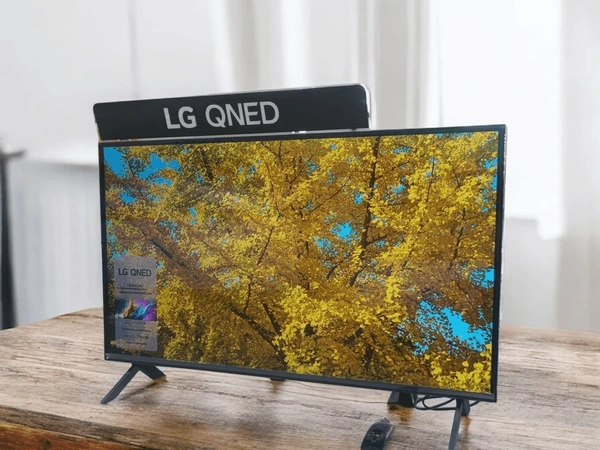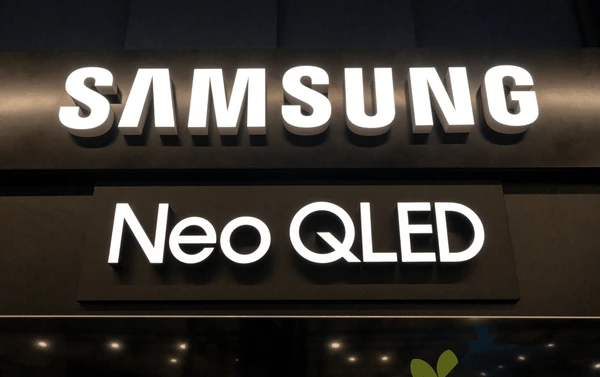
Introduction: QNED vs. QLED
When shopping for a high-end TV, you’ll likely come across QNED and QLED technologies. QLED, developed by Samsung, combines Quantum Dots with LED backlighting to deliver bright and vibrant visuals. On the other hand, LG’s QNED takes it a step further by integrating mini-LED backlighting with Quantum Dots and NanoCell technology for better black levels and color precision. In this guide, we’ll compare QNED vs QLED to help you understand their differences and decide which TV is the perfect fit for your needs.
QNED vs. QLED – What’s the difference? Eureka Technical Q&A explains how QNED combines Quantum Dot and NanoCell technology with Mini LED backlighting, offering enhanced brightness and color control compared to traditional QLED displays—helping you choose the best screen for your viewing needs.

What Is QLED?
QLED stands for Quantum Light Emitting Diode. It is a display technology that utilizes quantum dots to produce light, resulting in improved color accuracy, brightness, and energy efficiency compared to traditional display technologies like OLEDs. Quantum dots are tiny semiconductor particles that can emit light when an electric current is passed through them, and they have the ability to produce a wide range of colors, which contributes to the high color purity and wide color gamut of QLED displays.
Key Characteristics of QLED
- High Color Purity: QLEDs offer extremely narrow emission spectra, resulting in highly saturated colors and a wider color gamut compared to OLEDs.
- High Luminescent Efficiency: Quantum dots in QLEDs exhibit high fluorescence efficiency, leading to lower power consumption and higher brightness.
- Size-Dependent Emission: Emission wavelength of quantum dots is tunable with size, allowing for precise color tuning and continuous spectrum control.
- Ultrathin and Transparent Structures: QLEDs can be designed to be ultrathin or even transparent due to the thin nature of quantum dot layers.
- Improved Device Stability: Inorganic quantum dots in QLEDs provide better stability compared to organic materials used in OLEDs.
What Is QNED?
QNED stands for Quantum Nano Emitting Diode. It is a type of display technology that utilizes quantum dots, which are nanometer-sized semiconductor particles, in conjunction with gallium nitride (GaN) to create light-emitting elements. These elements are arranged on a pixel basis through processes like inkjet printing, resulting in a display technology that has the potential to offer improved performance and longevity compared to traditional OLED displays.
Key Characteristics of QNED
- Light-Emitting Mechanism: QNEDs emit light based on quantum mechanical phenomena occurring within the quantum dots, which are typically a few nanometers in size.
- Material Composition: The use of inorganic materials like gallium nitride (GaN) helps maintain luminance over time, potentially extending the lifespan of the display compared to organic material-based OLEDs.
- Manufacturing Process: The manufacturing involves techniques such as inkjet printing, which allows for precise arrangement of light-emitting elements on each pixel.
- Potential Advantages: QNED technology aims to address limitations of OLEDs, such as degradation over time, by offering improved stability and potentially higher efficiency.
- Applications: This technology is being developed for use in display devices, including TVs, where it is considered a potential alternative to OLED technology.

QNED vs QLED: Key Differences
Structure and Materials
- QLED: A QLED consists of a layer of quantum dots sandwiched between two contact layers, typically a transparent electrode and a reflective electrode. The quantum dots are usually made of inorganic materials like cadmium selenide (CdSe) or cadmium sulfide (CdS).
- QNED: A QNED is a more recent development that involves a different structure. It consists of a quantum dot layer placed between a semiconductor and a dielectric layer, forming a heterostructure. The quantum dots in QNEDs can be made of various materials, including perovskites.
Emission Mechanism
- QLED: In a QLED, the quantum dots emit light when excited by an electric current. The color of the emitted light depends on the size and composition of the quantum dots.
- QNED: In a QNED, the quantum dots can also emit light when excited, but the heterostructure design allows for additional mechanisms such as quantum confinement and strain engineering, which can enhance the light-emission properties.
Performance Characteristics
- QLED: QLEDs are known for their high color purity, brightness, and energy efficiency. They have a wide viewing angle and fast response time, making them suitable for display applications.
- QNED: QNEDs have the potential to offer even better performance than QLEDs due to the advanced heterostructure design. They can exhibit higher quantum efficiency and longer operational lifetimes.
Applications
- QLED: QLEDs are currently used in various display applications, including TVs, monitors, and mobile devices. They are known for their excellent color reproduction and energy efficiency.
- QNED: QNEDs are still in the early stages of development, but they have the potential to be used in next-generation display technologies, including flexible and wearable displays.
Picture Quality: Which Is Better?
Color Accuracy and Saturation
- QLED: Excellent color accuracy and saturation, often superior to OLEDs.
- QNED: Expected to offer even better color reproduction and saturation, potentially surpassing QLEDs.
Brightness and Contrast
- QLED: High peak brightness and good contrast, but may not match OLEDs in terms of infinite contrast ratio.
- QNED: Potential for even higher brightness and improved contrast, thanks to the integration of advanced nano-emitter technologies.
Energy Efficiency
- QLED: Generally more energy-efficient than OLEDs, especially at high brightness levels.
- QNED: Could offer even better energy efficiency with the integration of advanced technologies.
Viewing Angles
- QLED: Good viewing angles, but can suffer from color shift and brightness loss.
- QNED: Expected to offer excellent viewing angles with minimal color shift and brightness loss.

Use Cases for QNED and QLED
QLED
- Consumer Electronics: QLEDs are widely used in TVs and monitors due to their high brightness, color accuracy, and efficiency.
- Advertising Displays: QLEDs are suitable for large-scale advertising displays where high brightness and color accuracy are crucial.
- Home Entertainment: QLEDs are popular in home entertainment systems due to their excellent picture quality and wide color gamut.
QNED
- Professional Displays: QNEDs could excel in professional displays such as medical imaging, graphic design, and video editing where high accuracy and long lifespan are critical.
- Automotive Displays: QNEDs could be used in automotive displays where high brightness, color accuracy, and reliability are essential.
- Augmented Reality (AR) and Virtual Reality (VR): QNEDs might offer advantages in AR and VR applications due to their potentially better performance under various conditions and improved stability.
Conclusion: QNED vs QLED
Both QNED and QLED offer stunning picture quality with vibrant colors and high brightness, but they serve slightly different needs:
- QNED excels with its mini-LED backlighting, providing better black levels, contrast, and color purity.
- QLED is a fantastic choice for bright rooms, delivering impressive visuals at a more affordable price point.
Ultimately, if you’re looking for the best balance of brightness, black levels, and color accuracy, QNED is the way to go. However, QLED remains a solid option for those prioritizing brightness and value.
FAQs
- What is the main difference between QNED and QLED?
QNED uses mini-LED backlighting with Quantum Dot and NanoCell technology, offering better contrast and black levels compared to QLED. - Is QNED better than QLED for dark rooms?
Yes, QNED’s mini-LED technology provides more precise local dimming, making it better for darker environments. - Does QNED use OLED technology?
No, QNED combines mini-LED, Quantum Dot, and NanoCell technology but does not use OLED panels. - Which is more expensive, QNED or QLED?
QNED TVs are generally more expensive due to their advanced mini-LED backlighting. - Can QNED or QLED compete with OLED?
While QNED and QLED deliver excellent brightness and color, OLED still outperforms both in black levels and perfect pixel control. - What lasts longer, QLED or OLED?
QLED TVs are typically more durable because they don’t suffer from burn-in or image retention, unlike OLED panels.
To get detailed scientific explanations of QNED vs. QLED, try Patsnap Eureka.

Learn more
Multiplexor: Efficient Data Selector for Electronics
Understanding STP Cable: Shielded Twisted Pair Explained
Understanding Twisted Pair Cable: Basics, Benefits, and Uses
JFET 101: A Beginner’s Guide to Junction Field-Effect Transistors

